Every ‘Mass Effect’ squadmate, ranked from a storytelling perspective
Ranking the Mass Effect original trilogy characters probably seems impossible. The cast is so diverse and dynamic that everyone playing will find different characters who resonate with them more than others.
I love Tali Zorah, the awkward, nerdy engineer who eventually matures into a woman capable of expressing herself beyond the envirosuit that hides her physical traits. You might love Zaeed, the gruff mercenary who is the very pinnacle of Renegade — a role-playing alignment in-game that prioritizes getting the job done at any cost, no matter the moral consequences — but still has the heart of a child when confronted with things like a toy claw game or his very first rifle.
In this list, I’ll be ranking characters based on how they’re written, as opposed to focusing on my opinions. The best, most memorable characters are those with agency — characters who influence the plot with their actions and decisions. In Mass Effect, some characters are definitely more impactful than others, and some are memorable for their traits and character arcs. Overwhelmed newcomers to Mass Effect Legendary Edition may want to use these rankings to see which characters may be more worth their time. (Just skip the descriptions to avoid spoilers).
[I’ve already played the trilogy. Should I buy ‘Mass Effect Legendary Edition’?]
We’ll be looking at these criteria:
- Relevance to the overall story and plot
- Character development/arc across the trilogy
- Uniqueness in character concept
- Loyalty mission (not applicable in 3)
Some final rules: only squadmates will be ranked (sorry Joker, Chakwas, Traynor and others). We’ll also rank each game separately, because some characters are more effectively written in one game than another.
This story includes major spoilers for the Mass Effect trilogy.
Mass Effect 1
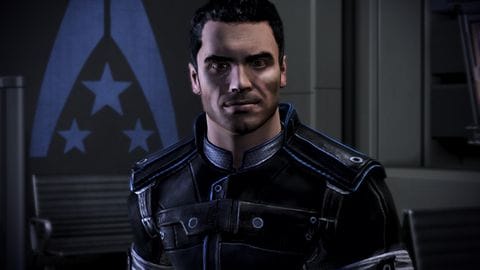
6. Kaidan
Kaidan suffers from the Bioware trope of the “first teammate normal man” who makes all other teammates shine by comparison. In Bioware polls and fan polls alike, Kaidan ranks low simply because his character doesn’t exhibit interesting traits (especially in the first game). Of all squad mates in “Mass Effect 1,” he’s the only one who doesn’t affect the plot in any tangible way.
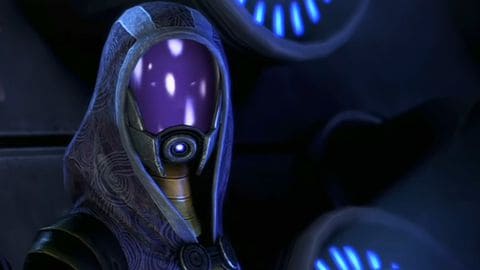
5. Tali
My favorite ranks this low in the first game mostly because she suffers from having to be an exposition machine for two entire races — the Quarians and the Geth. It doesn’t give her actual character and personality much room to shine.
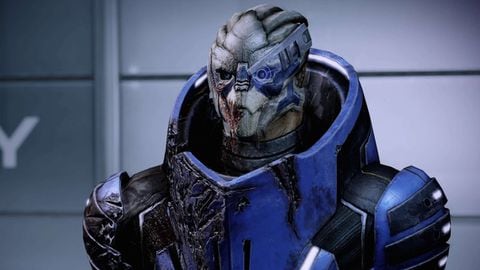
4. Garrus
Garrus suffers in “Mass Effect 1” for similar reasons to Tali. He’s the proxy for the Turian race, and spends most of his time explaining them, as well as his former job. One cool thing about Garrus is that your choices can actually influence his persona. You either allow him to continue his Renegade streak — taking the own law into his own hands — or you convince him to stick to the lawful path.
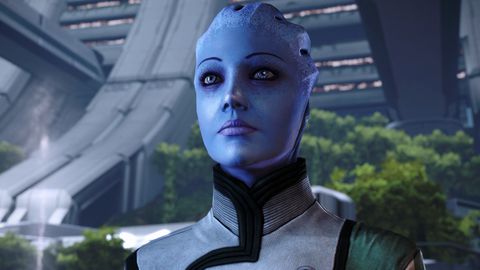
3. Liara
Liara, who undergoes the most dramatic arc of any character in the trilogy, starts this game as an awkward scientist who’s unsure about her place in the galaxy. She discovers the final area that the main antagonist Saren is trying to get to, making her one of the more integral characters to the plot. Her naivete and curiosity toward other races, especially humanity/Shepard, makes her quite endearing compared to the rest of the cast.
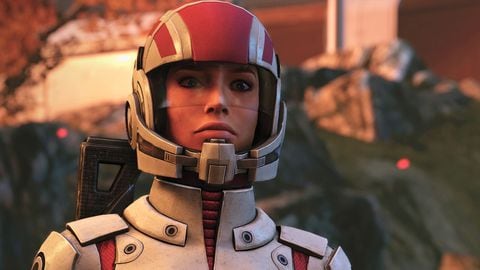
2. Ashley
Ashley gets called a “space racist” by a large portion of the fans. She’s a confident tomboy with a strong sense of religion, poetry and family who isn’t afraid to express her highly opinionated feelings. A conversation with her reveals that she doesn’t trust aliens, effectively saying the other alien races treat humanity like dogs. It’s this aspect that makes her so compelling. Toward the end of the game, she changes her mind about aliens, growing to trust your alien crew and regretting her earlier comments (unless you ignore her or support her viewpoints). Her arc in the first game is the most complete of any character. Nobody leaves feeling apathetic about Ashley, the mark of a well-written character. You either love her or you hate her.

1. Wrex
Few characters can say “Don’t piss in my ear and tell me it’s raining” with the same gravitas and deadpan as Urdnot Wrex. Wrex is a Krogan — this universe’s hotheaded warrior race — who’s given up on his people. The Krogan are doomed from a sterility plague called the Genophage, which was forced upon them by other races. Wrex abandons his homeworld and people, tackling mercenary assignment after mercenary assignment with a wicked cynicism. It’s not until he meets Shepard that he’s reminded of the values of teamwork, and how other races can still have compassion for the Krogan. The Virmire showdown with Wrex is the one of the few moments a squadmate will actually challenge Shepard’s authority and decisions. While Wrex doesn’t technically affect the plot, he is the player’s emotional connection to one of the most consequential story lines in the trilogy.
Mass Effect 2
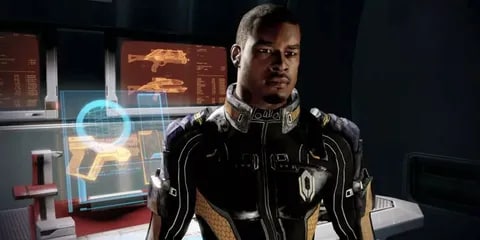
12. Jacob
The problem with Jacob isn’t that he’s boring. The problem with Jacob is that he refuses to open up in any way. When you ask about his experience with the Corsairs, he makes a blanket statement and says that life is behind him. When you ask about his relationship with Miranda, he refuses to go into details. When you ask about his father after his loyalty mission, he doesn’t want to talk about it. How are players supposed to connect with a character who doesn’t seem to want to connect with them?
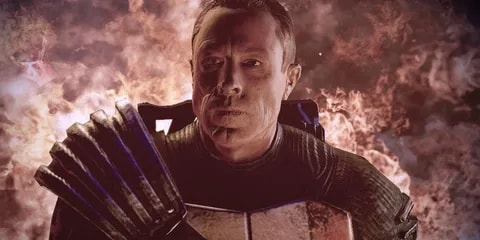
11. Zaeed
If you choose the Paragon path in Zaeed’s loyalty mission you can teach him the values of teamwork, contra to his usual self-serving mercenary approach. Unfortunately, the game doesn’t go anywhere with this character arc — it doesn’t influence the game in any meaningful way. Zaeed doesn’t get colorful characterizations until “Mass Effect 3′s” Citadel DLC. In the second installment, he’s mostly there to tell stories about how he was the “only one who made it out of there alive.”

10. Kasumi
Kasumi at times feels like she’s part of an entirely different game. Her quirky, bubbly personality is a sharp contrast from the otherwise dark, brooding atmosphere of “Mass Effect 2.” While that, plus her penchant for gossiping about other squadmates, is a welcome relief, she’s ultimately not very integral to “Mass Effect 2” outside of her isolated loyalty mission experience.

9. Grunt
Grunt takes a unique idea and unfortunately 180s into familiar territory. His first conversations are about how, despite being a genetic amalgamation of the most revered Krogan ancestors, he feels nothing for the Krogan, nor their plight. He’s effectively a blueprint for making other Krogan — which solves the Genophage sterility problem by ignoring it — but he actually doesn’t care about this or what he means to his people. That’s a cool concept. Unfortunately, after his loyalty mission, he adopts all aspects you’d typically see from a Krogan character: loud, brash, aggressive and war-driven. Similar to Zaeed, it’s not until “Mass Effect 3” that the writers decided to have Grunt adopt more interesting characteristics.

8. Samara
“Mass Effect 2” is full of such wonderful characters that everyone from this point on is a good character — despite their placement in the rankings. Samara is this universe’s approximation of a paladin, a Justicar. She violently carries out what her group’s belief system dictates is proper justice, but she does so in a quiet, maternal manner that is simultaneously captivating and terrifying. She’s one of the few romance options who actually rejects your advances — a refreshing change from the “throw yourself at Shepard” attitude typical of the other romances. She’s mostly hurt by her lesser screentime due to a later recruitment.
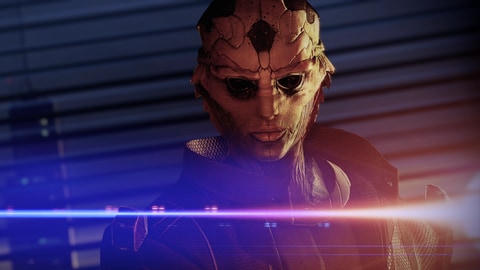
7. Thane
Thane is an alien who has resonated with audiences. He’s a capable assassin with such calm composure you’d never realize he’s dying from a disease. His whole story line involves coming to terms with his limited time left alive, and making amends for his biggest regret: a fractured relationship with his son Kolyat. That’s why he can look so alien and still be a relatable, captivating — even romantically attractive — character in his own right. He’s held back by two things: His late game appearance and his irrelevance in the suicide mission (he’s the only character who can’t fulfill any role apart from the escort role).

6. Miranda
Miranda is arguably the most plot-relevant character next to Shepard, because she brings Shepard back to life and gives them synthetic components, paralleling the underlying plot of the entire trilogy. Miranda is also necessary for getting players to sympathize with Cerberus, who up until “Mass Effect 2” was an antagonistic terrorist group. She eventually learns to see Shepard (and by extension herself) less as a tool for Cerberus and more as an individual. She’s also the most likely squadmate to live in the suicide mission, meaning most players get plenty of time to see her grow throughout the trilogy.
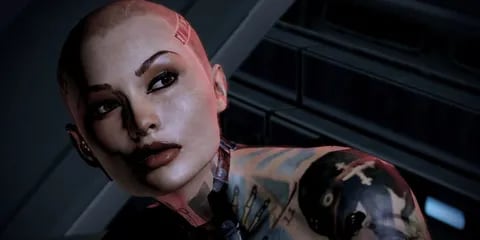
5. Jack
Jack is Miranda’s opposite — though both share more similarities than either would admit. She’s an extremely necessary counterpoint to the squad; while all the squadmates fall in line with Shepard/Cerberus’s machinations, Jack vocally disagrees, and despises Cerberus due to the trauma they inflicted on her as a child. Her character is only slightly hindered by the fact that she doesn’t see true growth unless you decide to romance her. When you do, she decides to drop the “tough biotic b—-” act and finally be emotionally vulnerable with another human being.
4. Garrus
Turning Garrus into Space Batman was the best thing the writers could’ve done for this character. Garrus evolves into a wisecracking cowboy who hunts down crime syndicates with his own band of mercs. But in “Mass Effect 2,” he’s in danger of losing himself and his sense of morality in the name of punishing the corrupt. An expertly-crafted loyalty mission brimming with dramatic tension sees Shepard either pleading with Garrus to not lose himself to revenge, or stoking those impulses. Either way, it’s the beginning of one of the best bromances/romances in video game history.
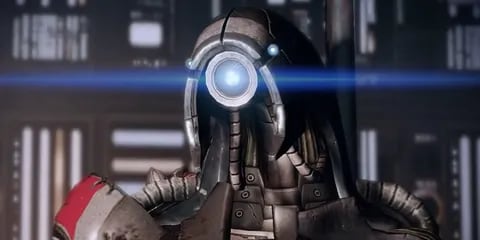
3. Legion
Legion provides critical context to the Quarian-Geth storyarc. The Geth are by far the most alien race in the trilogy. They’re a collection of software programs that house themselves on mobile robots when necessary. But before meeting Legion, players have no idea that there are actually two separate Geth factions — one with the Reapers (they’re called Heretics — those are the Geth you were actually fighting in ME1), and one that just wants to be left alone on Rannoch, the planet previously occupied by them and their creators, the Quarians. Legion is only on screen for a very short period in “Mass Effect 2,” but he makes every second count, from his detailed explanations of the inner workings of Geth society, to his almost human obsession with Shepard.
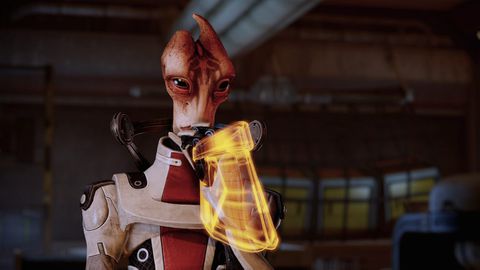
2. Mordin
Mordin is the most well-defined character in the trilogy. In just one game, it’s revealed that he’s a caring doctor, a scientist driven mostly by logic, a brutal ex-spy, an actor who likes patter songs, a dabbler in religion, a hyperactive madman who speaks like William Shatner on speed and a man responsible for dooming a whole race. Mordin didn’t create the Genophage, but he maintains it, making sure it continues to be effective, wrecking any chance of true Krogan civilizational growth. He doesn’t regret this decision, passionately arguing that the Genophage was a necessary choice to protect the galaxy from Krogan brutality. He is a great counterpoint to the emotional connection players formed with Wrex in the previous game, and his lovable goofiness makes it difficult for players to decide where they land on the Genophage. He’s also integral to the plot: He comes up with the countermeasure to the paralyzing seeker swarms.
1. Tali
Tali, who is now untethered from exposition duty, gets the best loyalty mission in the game. It introduces the Quarian society in courtroom drama fashion while also showcasing how much Tali’s grown over the years. Gone is the wide-eyed wonder she displayed in the first game for the galaxy’s technological feats. Now, she’s a capable engineer leading her own squad in the name of her people. While she ultimately proves to be a bad firefight leader, she’s expresses her personality and emotions more clearly here than in the first game. She shows just how much the player has meant to her own growth through lovably awkward admiration, and she displays familial devotion to her people with nerdy, explanatory flair. The fact that she’s able to show who she truly is — and have players fall for her romantically — while her face and body are totally obscured is a feat.
Mass Effect 3
19. Jacob
As if Jacob couldn’t get any worse, he gets sidelined in his own side mission — and he cheats on Femshep no matter what the player chooses. Maybe it’s realistic for a character who so actively thwarts your attempts to get close, but it certainly doesn’t do much to keep players invested.
18. Kasumi
Kasumi also commits the unforgivable sin of actively thwarting player influence. No matter what you choose in her “Mass Effect 2” loyalty mission, she goes behind your back and looks into the Graybox. We know who Kasumi is as a character; it’s not totally unthinkable for her to do this. What leads to her placement this low on the list is just how unimportant she is to the story. She doesn’t even get a proper mission in “Mass Effect 3,” just a small Citadel side quest.
17. Zaeed
As a DLC character in “Mass Effect 2,” Zaeed doesn’t get a whole lot to do in “Mass Effect 3” until the Citadel DLC, where he arguably gets its best scenes. He exhibits a childlike glee toward anything violent, like when setting up insanely deadly traps in Shepard’s apartment that’ll probably kill Shepard before its actual invaders. But he also shows wisdom and a passion for art in a failed attempt to court Samara. If this Zaeed had shown up earlier in the series, he might’ve been able to crystallize himself as more of a fan favorite. As it stands, he’s a secondary character with limited screen time.
16. Samara
The writers did Samara dirty in this game. First, they retconned her comments on how many Ardat Yakshi there are in the universe (Ardat Yakshi are diseased Asari who are basically vampires who need to be sheltered away from others). Then, they made Samara break her Justicar code — something she’s followed literally for centuries — by attempting to kill herself so that her daughter Falere can live. The fact that it’s Falere who comes up with the loophole solution to keep Samara alive not only makes the Justicar code look silly, it makes Samara look silly for not thinking of it herself.
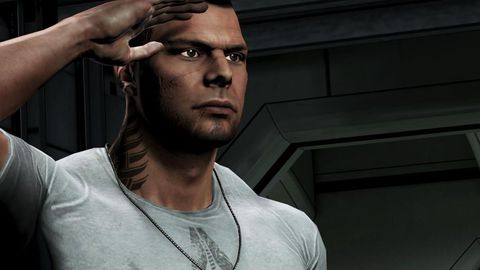
15. James
James was written as a proxy for anyone who started playing the trilogy with “Mass Effect 3.” No player should start at the final installment if they want to invest in a trilogy, especially since the Mass Effect trilogy is a good one that deserves your time and dedication. This said, James does a good job of orienting new players to the universe, since he constantly asks about things that happened in previous games. On top of this, he’s a pretty funny character. Unlike Jacob, he opens up about his past and his fears. It’s just hard for players to invest in a new character this late in a trilogy.
14. Grunt
The writers finally realized a great angle for Grunt’s character in “Mass Effect 3′s” Citadel DLC: Shepard technically birthed Grunt. Why not make Grunt a son-figure for Shepard? So in the Citadel DLC, Shepard bails this giant warrior turtle out of jail like a parent would a mischievous child caught vandalizing. Grunt reveals he likes reading comics, is fascinated by dinosaurs and sharks, and says he’s “sad Hanar [an in-game jellyfish alien race] can’t wear sweaters” after having a few too many drinks. Unfortunately, despite how great he is in the Citadel DLC, Grunt doesn’t have a major impact on the main story.
13. Ashley
What happened to Ashley in this game? Not only does she look completely different, letting down her hair — as opposed to the more practical bun she sported in the first title — but her personality completely shifted. Her tomboyish, family-first bluntness got replaced with army speak and drinking problems. While it is nice that she now views Tali, an alien, as a sister, she also comments on how excited she is to shoot some “flashlight-heads,” referring to the Geth. Her character growth is inconsistent, and her arc was already completed in “Mass Effect 1.”
12. Jack
Jack undergoes a dramatic transformation in this game. Gone is her psychotic look and her murderous, vengeful hatred for everything around her. Instead, her outfit and personality are toned down, as she’s adopted a family of sorts in the form of a school for biotically gifted kids. It’s a great place to take the character — it’s just unfortunate that it mostly happens off-screen, and we only see the results of the transformation. Jack, like many of her “Mass Effect 2” comrades, isn’t integral to the main story in “Mass Effect 3.”
11. Miranda
Miranda fares slightly better than Jack simply due to her getting more screentime and having more impact on the main story. Miranda left Cerberus after “Mass Effect 2,” deciding that it’s more important to focus on her sister, Oriana, with the limited time the galaxy appears to have left. But Cerberus and Miranda’s father will have none of that, and they pursue her throughout the galaxy. It’s baffling why Miranda doesn’t choose to rejoin Shepard and hide on the Normandy, probably one of the safest ships to be on (it has armaments, a stealth system and a team dedicated to fighting Cerberus). She also gets docked points for going through the same character arc as in “Mass Effect 2.”

10. Javik
Javik subverts your expectations the right way. Liara talks about the Protheans as a kind, wise race that peacefully ruled over the galaxy. In actuality, they were a brutal dictatorship that subjugated other races. Javik looks down on you and your companions. He’s a necessary “victory at all costs” voice for your squad, otherwise composed mostly of optimists. Javik doesn’t change anything story-wise, despite being the last living Prothean. Still, the explanations you get from him as to who his people were and the mistakes they made provide great context for the overall story, as well as great character beats for Liara.

9. Edi
Edi is the main synthetic voice of your team and sports a surprisingly sharp sense of humor. She’s the typical “robot who wants to be more human” sci-fi trope, but she’s effective at getting you to empathize with synthetics on the whole. Her potential relationship with Joker is one of the most heartfelt relationships of the series, and it’s one of the best examples for how the galaxy can overcome its organic vs. synthetic problems. The problem with her is that she was a perfectly fine character already as the Normandy’s disembodied AI voice. The sexy humanoid body she receives in “Mass Effect 3,” while contextually sound, feels a little unwarranted.
8. Thane
Thane completes his character arc in “Mass Effect 3” by making the most of his remaining time. He re-connects with his son, saves the Salarian councilor and manages to stave off a trained assassin in the coolest way possible. Thane is also a necessary casualty of the war who effectively and emotionally raises the stakes against Cerberus. Thane’s death motivates players: “That was for Thane you son of a b—-!” will remain one of the most satisfying in-game lines of all time.
7. Kaidan
It’s ironic how Kaidan, who is less interesting than Ashley in “Mass Effect 1,” totally surpasses her in “Mass Effect 3.” Kaidan technically outranks Shepard, and he has his own squad before joining the Normandy. He acts as a foil to Shepard: Both have the responsibility and burden of leadership, but while Shepard shows boundless confidence, Kaidan constantly questions himself. Conversations with him provide interesting philosophical debates about the Normandy crew’s role, and what’s important to prioritize at the end of all things. This previously untapped dimension to Kaidan’s character makes him infinitely more relatable. He’s scared. More characters in this crew should be.
6. Legion
Legion is a more effective character than Edi despite the two serving the same emotional function, and it’s because he takes the exact opposite approach to get players to sympathize with him. Edi attempts to prove her value as a lifeform by conforming to what humanity is from a physical and emotional perspective (she literally takes a humanoid form in “Mass Effect 3”). Legion attempts to prove his value as a lifeform despite his alien, robotic qualities. He has no desire to conform to organic/human standards — he just wants to know if he has a soul. His subversion is a much more interesting approach to the ultimate story of the trilogy: are synthetics inherently incompatible with organics simply because their natures are different?
5. Mordin
Mordin has a change of heart about the Genophage, suddenly deciding that his actions were wrong and desperately searching for a cure in “Mass Effect 3.” This might seem out of character for Mordin, and players can actually bring that up in the final confrontation with him. His response? An angry, passionate, “I MADE A MISTAKE!” Mordin never admits to mistakes throughout “Mass Effect 2.” The fact that he responds to you so viscerally — not to mention how it’s the only line he ever says in a complete sentence — expresses how difficult processing this has been for Mordin. In one line, you understand the emotional journey Mordin’s been on. His desire to redeem himself in the final moments the galaxy has left is powerful, relatable and indicative of the desperation people feel in “Mass Effect 3,” making him one of the best characters of this game.
4. Wrex
Mordin and Wrex are the player’s emotional cornerstones to the first major story arc in “Mass Effect 3,” curing the Genophage. While Mordin’s change of heart came in this game, Wrex’s came in “Mass Effect 1.” Since then, he’s grown into a capable leader for the Krogan, and is looking to correct his race’s mistakes by adopting progressive policies and leaving the more barbaric, warlike qualities of the race in the past. Seeing Wrex evolve from a self-serving mercenary to a passionate leader of an entire people is one of the most satisfying character arcs of the series. He also hasn’t lost his sense of humor, nor his friendship to Shepard, maintaining the qualities that made players fall in love with him as a character in the first place.
3. Liara
The other most satisfying character arc in the game comes from Liara, who starts as a shy scientist unsure of herself, then grows into the most powerful information broker in the galaxy. Liara is the only character who can’t die throughout the entire series (unless you count the complete failure ending in “Mass Effect 3” where she dies at the very end), so the devs use that to their advantage by making her relay most to all the important plot developments in the final game. She’s around for almost every debrief scene, revealing new information about the Reaper threat or what Shepard’s team needs to do. She’s also technically the reason Shepard’s body was recovered at the start of “Mass Effect 2.” In short, the story can’t exist without Liara, which is fine since she’s endeared herself to fans with her newfound confidence and desire for little blue babies.
2. Tali
Writer Patrick Weekes had to argue to get Tali a spot on the main squad in “Mass Effect 3,” and thank God they did. Not only did it keep the Shepard-Garrus-Tali squad intact, but Tali’s scenes in the final game are among the most satisfying payoffs in the trilogy. Whether you got Tali to finally reclaim her homeworld, only to realize her home has been with Shepard all along, or you desperately tried to stop Tali from committing suicide, Tali’s scenes in “Mass Effect 3” pack an emotional punch not present in most of the other squadmate scenes. That’s because her character is growing before our very eyes from game to game. In this game, she grows again, coming to understand that her past prejudices against the Geth were misguided and now desperately searching for any peaceful solution to the Geth-Quarian problem. Tali is a leader among her people in her own way: not through show of force or passionate speechmaking, but through understanding, and a willingness to grow and change. While players can play the Quarian-Geth arc in “Mass Effect 3” without her present, the arc doesn’t carry the same impact as it does with her there.
1. Garrus
During our interview with Jennifer Hale, voice actress of Commander Shepard, she admitted that the hardest line to get through was her goodbye line with Garrus. She chokes up midline — which is the line Bioware went with in-game — and there’s a great reason for that. Saying goodbye to Garrus seems impossible for players. There are few characters in RPGs that you spend more time with than Garrus, especially since he’s on Shepard’s squad in every game. The bond players share with him is powerfully tangible, cemented further by scenes showcasing their unending camaraderie, like the bottle shooting scene. The first person to ask Shepard (and by extension the player) how they’re doing and feeling after major story choices is consistently Garrus, further growing the attachment players have to him. It’s wild that Garrus might not be alive for some players in “Mass Effect 3.” He’s the best written squadmate in the third game: not for his relevance to the plot, but for his relevance to the player themselves.
Read more:
Every Resident Evil game, ranked
Every Assassin’s Creed game, ranked






